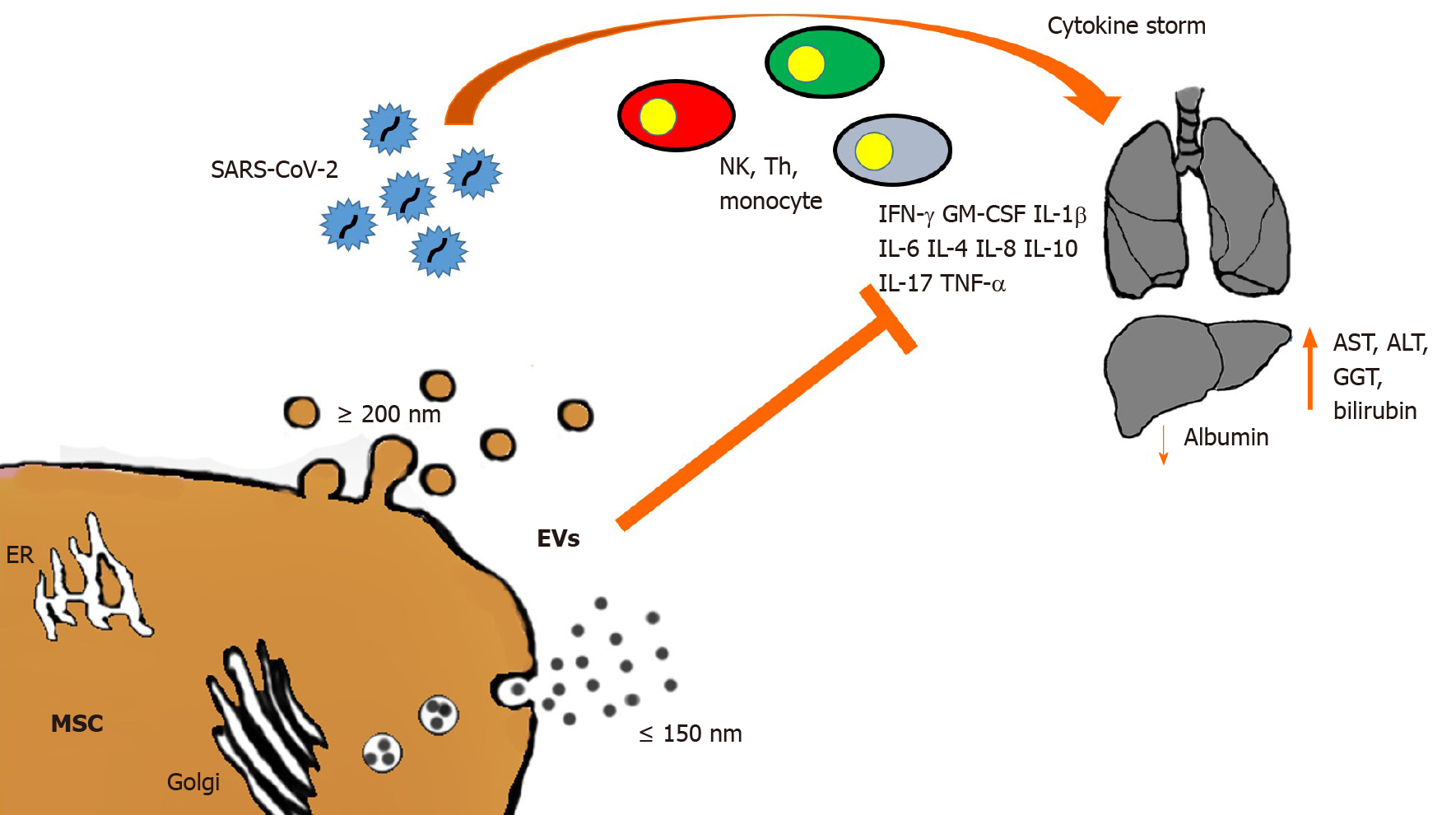Copyright
©The Author(s) 2021.
World J Gastroenterol. May 7, 2021; 27(17): 1905-1919
Published online May 7, 2021. doi: 10.3748/wjg.v27.i17.1905
Published online May 7, 2021. doi: 10.3748/wjg.v27.i17.1905
Figure 1 Schematic representation of severe acute respiratory syndrome coronavirus 2 impact on lungs and liver.
Cytokine storm with the cascade triggered by natural killer (NK) cells, T helper (Th) cell and monocytes, and the production of inflammatory cytokines (interleukin 1 beta [IL-1b], Il-2, IL-6, IL-8, IL-10, Il-17, interferons [IFNs], IFN-induced protein 10, tumor necrosis factor alpha, granulocyte-macrophage colony-stimulating factor [GM-CSF]). The infection in the liver causes an increase in aspartate aminotransferase (AST), alanine aminotransferase (ALT), gamma-glutamyl transferase (GGT) and bilirubin, and a decrease in albumin. Mesenchymal stromal cells (MSCs) can reduce the inflammatory response by extracellular vesicle (EV) release (large ≥ 200 nm and small ≤ 150 nm). ER: Endoplasmic reticulum; SARS-CoV-2: Severe acute respiratory syndrome coronavirus 2.
- Citation: Chinnici CM, Russelli G, Bulati M, Miceli V, Gallo A, Busà R, Tinnirello R, Conaldi PG, Iannolo G. Mesenchymal stromal cell secretome in liver failure: Perspectives on COVID-19 infection treatment. World J Gastroenterol 2021; 27(17): 1905-1919
- URL: https://www.wjgnet.com/1007-9327/full/v27/i17/1905.htm
- DOI: https://dx.doi.org/10.3748/wjg.v27.i17.1905









